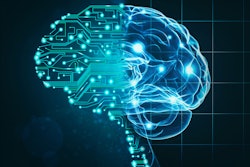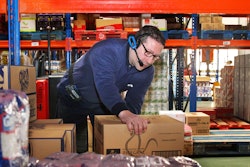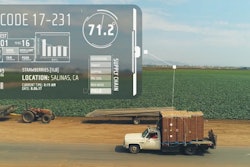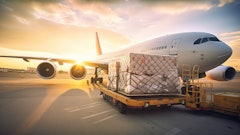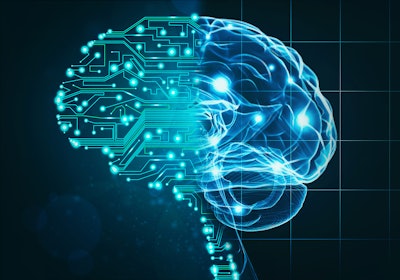
Emerging technologies like IoT, AI, big data, blockchain, and wearables are disrupting all industries. One of the industries whose face they are about to change forever is food logistics. In this highly competitive business, efficiency and timing are a must for those determined to succeed. The new tech can help food logistics companies tweak existing systems to their advantage.
The transformation has already begun.
IoT Reduces Food Waste, Monitors Goods Location and Condition
Food waste is a big problem today. In the United States alone, 150,000 tons of food is wasted every day. When it comes to food logistics, much of the waste is caused by flaws in cold chain processes and food logistics management.
IoT-powered systems efficiently address these flaws and minimize food waste. Through real-time location tracking and remote monitoring of critical control variables (e.g., temperature), they give operators the opportunity to respond swiftly to any problems that may arise: delivery delays due to the unpredictable weather, drastic changes in temperature of refrigerated trucks and containers, etc.
Sigfox, a French wireless network company, put IoT to use to provide an end-to-end view of the entire supply chain in real time, including monitoring of goods location and condition, and the sending of alerts to operators if anything goes wrong.
AI Identifies Damage, Increases Delivery Efficiency
No matter how hard logistics companies work to ensure that the goods are transported safely from one place to another, there’s always the risk of cargo damage. Making sure that the cargo is not damaged is quite time-consuming and could lead to frustrating delays and food spoilage. Intelligent AI-driven visual inspections taking seconds may soon solve this issue by replacing human-conducted inspections.
AI comes in handy as a way to achieve greater delivery efficiency. UPS, for instance, utilizes AI algorithms for intelligent route planning. Its proprietary solution ORION determines the best route for every single delivery vehicle, reducing delivery times and delivering perishable goods without peril.
AI can be also used to keep an eye on the driver to detect drowsiness, distracted driving, drunk driving, etc. EyeSight, a computer vision and AI solutions provider from Israel, developed a driver monitoring system that can tell when the driver is distracted, drowsy, or asleep.
Blockchain Reduces Food Fraud, Provides Transparency
Food fraud is hard to detect. This especially pertains to such products as seafood, olive oil, honey, alcohol and coffee. This is where blockchain should come into play and put an end to the illegal activity. Records stored on a blockchain cannot be lost, forged, or accessed by unauthorized hands.
This technology provides detailed traceability, allowing registered users to track every movement of a shipped item and make sure that the delivered goods meet specifications (e.g., country of origin). Anyone will be able to detect food fraud within seconds as scanning a blockchain barcode with a mobile phone will leave no room for doubt.
ITradeNetwork developed a blockchain solution to alleviate the problem of perishable food traceability across the supply chain. On this platform, growers, shippers, manufacturers, logistics providers, and other parties involved have access to native traceability data, order management functionality, quality inspection features, and analytics applications.
Wearables Deliver Real-Time Alerts, Save People’s Lives
Real-time alerts are highly beneficial for business, and food logistics is no exception. Hours-long traffic jams appearing out of nowhere with delivery of time-sensitive food products, container damage detected by wireless sensors, truck accidents due to driver fatigue — these and many other negative events will no more be a case with wearables in place.
The wearable technology is able to make driver response times faster. Wearable devices not only eliminate the danger of mobile phone conversations when driving but also ensure that the wearer will not miss any important notification sent to a mobile phone connected to the device.
Wearable devices are also useful for monitoring driver safety and fatigue. Smart glasses by Ellcie Healthy alert the wearer if the signs of drowsiness are detected. Smart watches like Apple Watch can be set to send a text message to the operator or fleet headquarters or call 911 in case of emergency. Or if there’s a blind spot detection system, wearables can notify the driver of these spots through vibration.
Big Data Optimizes Processes, Keeps Perishables Fresh
Logistics optimization is a vital goal for logistics service providers but it’s still difficult to attain. For food logistics, optimization will inevitably result in streamlined processes, better routes and resource utilization, reduced costs and, potentially, less food waste.
Logistics companies manage a massive flow of goods that generates massive data sets, meaning that they are well-placed to benefit from what big data has to offer. Transmetrics, a Bulgarian company, developed a predictive optimization system for logistics companies that uses big data, AI, predictive analytics, and other breakthrough technologies.
Big data analytics can also help logistics providers keep perishables fresh longer by dynamically optimizing routes whenever necessary and preventing cargo damage during delivery by analyzing and interpreting data coming from different sources: historical route data, social media signals, real-time updates from IoT devices, and others.
When the world of technology and food logistics come together, they can work wonders. The first results are promising. But there’s a long path to the widespread adoption.




